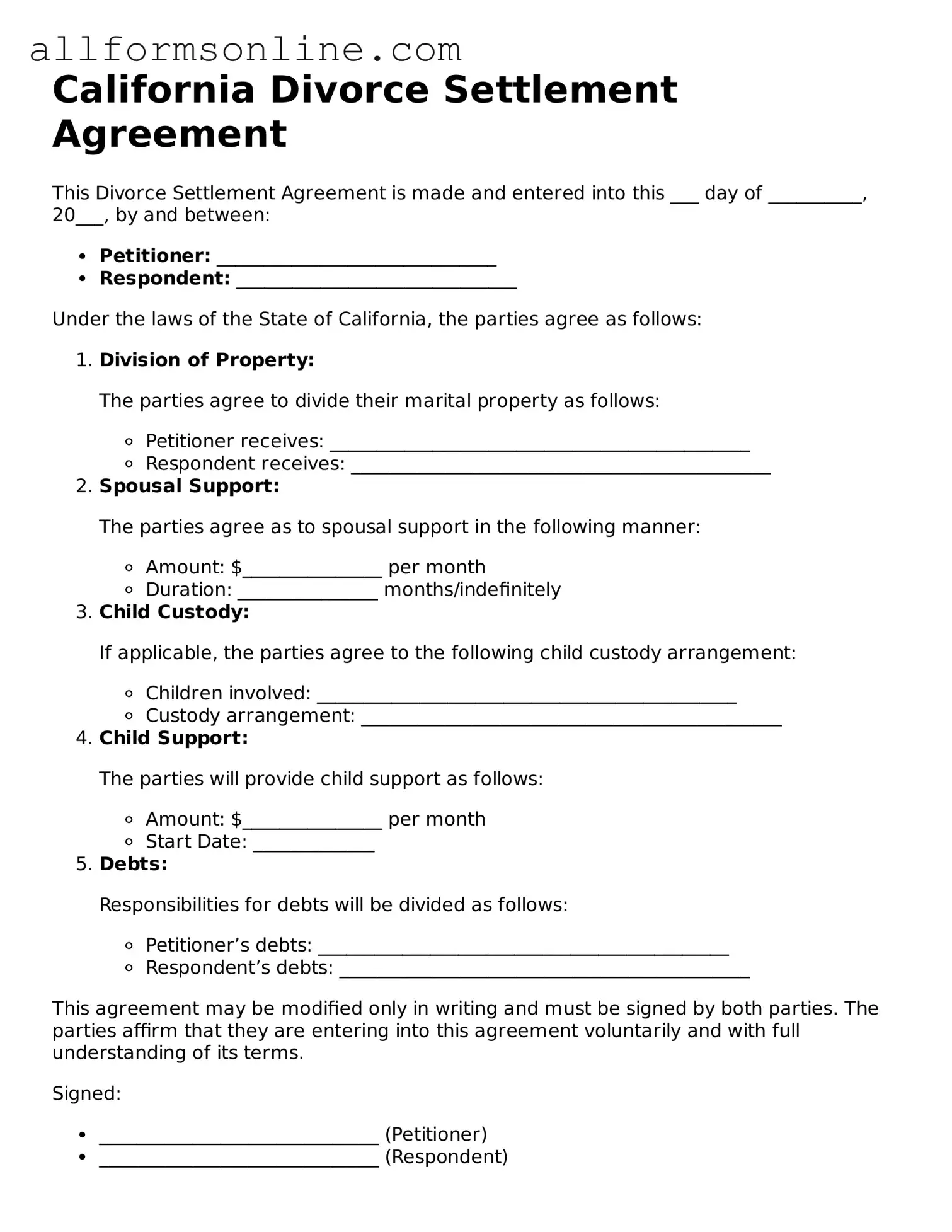What is a California Divorce Settlement Agreement?
A California Divorce Settlement Agreement is a legal document that outlines the terms of a divorce. It includes details about property division, child custody, child support, and spousal support. This agreement is crucial as it helps both parties understand their rights and responsibilities after the divorce is finalized.
Who needs to fill out the Divorce Settlement Agreement?
Both spouses must fill out and sign the Divorce Settlement Agreement. This document is essential for those who are divorcing and have reached an agreement on how to settle their differences. If there are minor children or significant assets involved, it becomes even more important to have a clear agreement.
Is a Divorce Settlement Agreement legally binding?
Yes, once both parties sign the agreement and it is submitted to the court, it becomes legally binding. This means that both parties are obligated to follow the terms outlined in the agreement. If one party fails to comply, the other can seek enforcement through the court.
Can I modify the Divorce Settlement Agreement after it is signed?
Yes, modifications can be made after the agreement is signed, but both parties must agree to the changes. If circumstances change significantly, such as a job loss or a change in custody needs, it may be necessary to revisit the agreement and file for modification in court.
What happens if we cannot agree on the terms?
If you and your spouse cannot reach an agreement on the terms of the divorce, you may need to go to court. A judge will then make decisions regarding property division, child custody, and support. This process can be lengthy and costly, so it is often best to try to negotiate a settlement outside of court.
Do I need a lawyer to create a Divorce Settlement Agreement?
While it is not legally required to have a lawyer, it is highly advisable. A lawyer can help ensure that your rights are protected and that the agreement complies with California law. They can also assist in negotiating terms that are fair and reasonable for both parties.
What if my spouse refuses to sign the Divorce Settlement Agreement?
If your spouse refuses to sign the agreement, you may need to seek legal intervention. You can file for divorce and request that the court make decisions regarding the terms of the divorce. This can lead to a more adversarial process, so it is often better to try to reach an agreement if possible.
How long does it take to finalize a Divorce Settlement Agreement?
The time it takes to finalize a Divorce Settlement Agreement can vary greatly. If both parties agree on the terms, it may take a few weeks to a couple of months. However, if there are disputes or complications, the process can take much longer, potentially several months or even years.
What should I include in the Divorce Settlement Agreement?
Key elements to include are property division, child custody arrangements, child support, and spousal support. Additionally, consider including provisions for health insurance, tax considerations, and any other relevant financial matters. Clear and detailed terms can help prevent future disputes.
Where do I file the Divorce Settlement Agreement?
The Divorce Settlement Agreement should be filed with the court where your divorce case is being processed. Ensure that you keep copies for your records and provide copies to your spouse. Filing is a crucial step to make the agreement enforceable.
